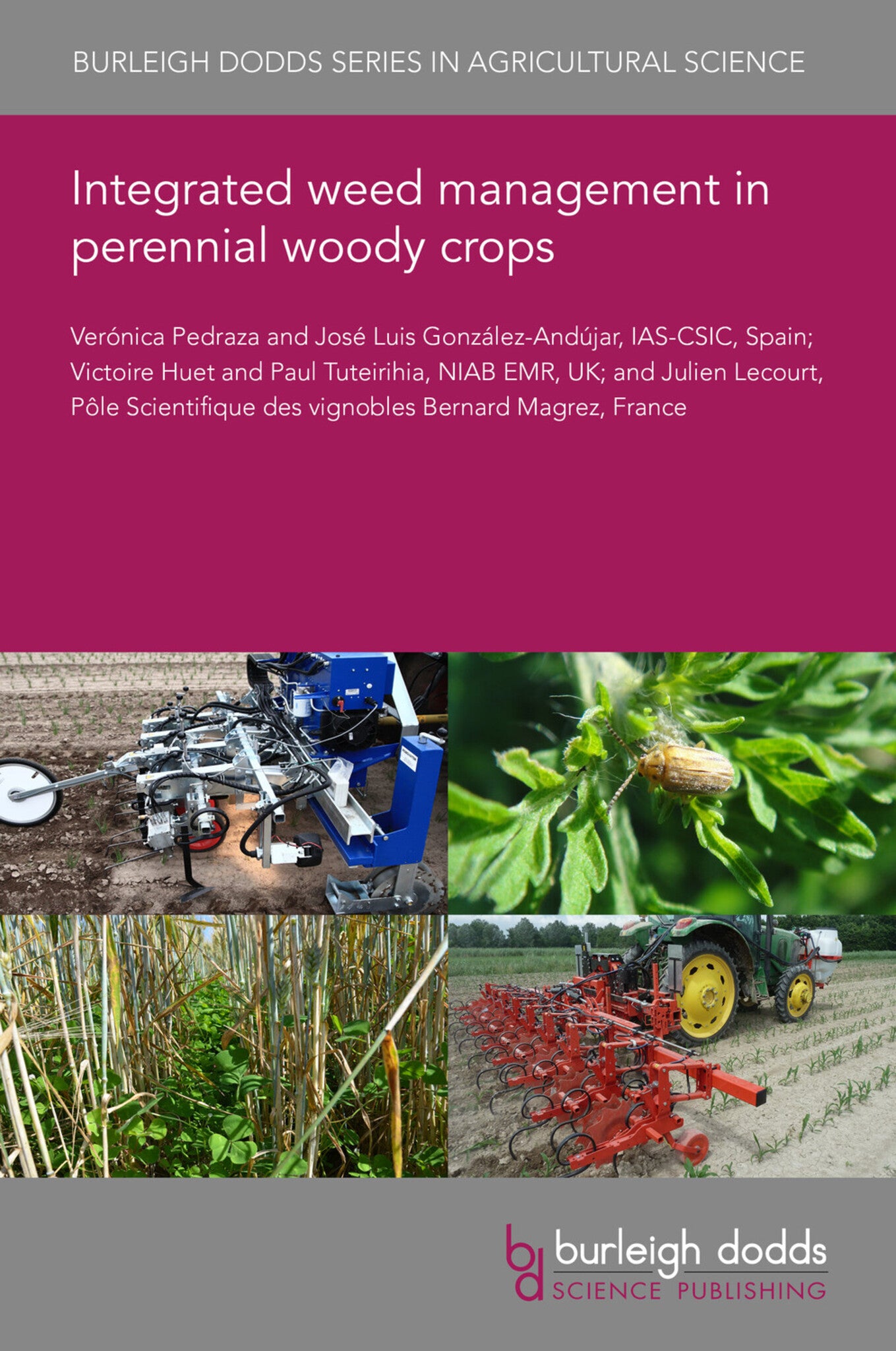We're sorry. An error has occurred
Please cancel or retry.
Integrated weed management in perennial woody crops
Dr verónica pedraza,
Dr jose gonzalez-andujar,
Dr victoire huet,
Dr paul tuteirihia,
Dr julien lecourt
Regular price
£25.00
Sale price
£25.00
Regular price
£25.00
Unit price
/
per
Sale
Sold out
Re-stocking soon
Perennial woody crops span over a broad variety of species in Europe with olive and vine being the most cultivated tree crops. Nowadays, the increasing problem of herbicide resistance, the possible...
Read More

Some error occured while loading the Quick View. Please close the Quick View and try reloading the page.
Couldn't load pickup availability
- Format:
-
25 April 2022

Perennial woody crops span over a broad variety of species in Europe with olive and vine being the most cultivated tree crops. Nowadays, the increasing problem of herbicide resistance, the possible withdrawal of herbicides from the EU market and their effects on farmland biodiversity are driving a need to change weed control practices. Therefore, a combination of different weed management techniques is commonly used with the main goal being to maintain productivity, maximise water and nutrients availability for the trees and reduce chemical weed control. Case studies from Spain and United Kingdom are presented where practices such as tillage, mulch application, no-till systems with herbicide use and spontaneous/sown cover crops are applied. However, the most suitable integrated weed management (IWM) strategy will be influenced by location, soil type, crop features, topography, farmer preferences and climatic conditions.

Price: £25.00
Publisher: Burleigh Dodds Science Publishing
Imprint: Burleigh Dodds Science Publishing
Series: Burleigh Dodds Series in Agricultural Science
Publication Date:
25 April 2022
ISBN: 9781801464888
Format: eBook
BISACs:
TECHNOLOGY & ENGINEERING / Pest Control, Pest control / plant diseases, SCIENCE / Life Sciences / Horticulture, TECHNOLOGY & ENGINEERING / Agriculture / Sustainable Agriculture, TECHNOLOGY & ENGINEERING / Agriculture / Agronomy / Crop Science, Sustainable agriculture, Agronomy and crop production, Commercial horticulture

1 Introduction 2 Case study: olive orchards in Spain 3 Case study: vineyards in the UK 4 Where to look for further information 5 Acknowledgements 6 References



